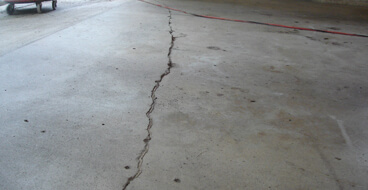Don’t Replace, Repair!
The Basics Of Concrete Repair
Everyone knows just how strong concrete can be when it is properly installed and maintained but even though it is one of the strongest building materials, it still has a tendency to become damaged. Whether if it’s exposed to heavy weathering or simply aging, concrete is prone to cracking, settling, lifting and spalling.
Where some contractors will try to blow these damages out of proportion to try to make you replace the entire concrete slab, we know better. We will work with you to find a solution that suits your concrete. Ready to see what we can do for you? We have outlined the most common forms of concrete damage and how we repair it down below!
Read about the process of concrete repair down below
Benefits of Patio
Common Forms Of Concrete Repair
When it comes to concrete, the damage that affects the slab is most commonly related to outside forces interacting with the concrete, concrete never becomes damaged on its own. From trees lifting the concrete from down below to the forces of expansion and contraction causing the concrete to crack, concrete is prone to damage from all angles. But thankfully, most forms of damage that affects the concrete can be repaired with procedures that our team can take head-on. Down below, you will find how our team of professional concrete contractors perform a concrete repair on any concrete slab.

Settling
Over time, the soils that support your concrete begin to become loose, destabilizing the structural integrity of the concrete slab. When this happens, it depends on the severity of the sinking that may warrant a full replacement of the slab or a repair. If your concrete can be repaired, the most common form of lifting the slab is mud jacking or the use of polyurethane structural foam which is a newer and more effective repair but is more expensive. The age and condition of the rest of the slab should play a role in the decision.

Cracks
Cracking is by far one of the most common forms of damage that affect concrete. These are most commonly caused by expansion and contraction from the changing of the seasons or by human error. Cracks in concrete can be repaired, however, larger cracks that cause structural damage or cracks that break through the entirety of the slab cannot be repaired. Depending on the type of crack, repairs include the use of epoxy injection or the use of hydraulic cement to fill the cracks.

Lifting
When it comes to lifting, concrete is a material that will require professional assistance to repair. Typically, lifting concrete is a form of damage that is caused by roots that grow under the concrete and push the material upwards, causing the concrete to crack and lift in uncommon areas. Unfortunately, the most efficient way to get rid of lifted concrete is to tear up the slab and replace it altogether. Quick fixes include grinding the concrete or creating a “ramp”, both are temporary fixes.

Spalling
Spalling is a form of damage that derives from the concrete being installed incorrectly or the mixture of the concrete used having too much water. The excess water makes the surface of the concrete peel, pop or flake, exposing the aggregate in the concrete. Before we begin the repair of the spalling damage, we use a pressure washer to identify any other sections of the concrete that is spalling. After we have found all of the problem areas, we fill the affected areas with a cementitious material, restoring the stock look of the concrete. Typically, spalling concrete is resurfaced to maintain a seamless and uniform finish.

Concrete Resurfacing
Concrete resurfacing is a process that is performed when the concrete has become gouged or has small cracks all over the surface. Concrete resurfacing involves filling all imperfections with a crack filler to supply a smooth finish. The material is a cementitious polymer that is used to coat the entire concrete slab, from garage floors to walkways. This coating has been tested and proven to be stronger than concrete with a weight tolerance of up to 6,000 PSI, almost double the strength of standard concrete. The coating is installed by profiling the slab and applying the material with a squeegee for larger areas where a trowel can be used in smaller areas.
